The house is filled with books and paintings, but what strikes the eye is the accumulation of objects on the shelves and surfaces: postcards, souvenirs, figurines, gadgets, all from Russia, the country Gian Piero Piretto has studied all his life. Piretto is strictly speaking neither a historian nor a literary critic. His field of inquiry is visual culture, a discipline which has established itself in Italy only very recently.
Throughout the years he has written extensively, and his books are all unusually original. In 2001, Einaudi published Radioso avvenire: Mitologie culturali sovietiche (Radiant Future: Soviet Cultural Myths), which plots the course from the utopian visions of October 1917 to the 1980s. Piretto analyzes images and everyday objects to illustrate Stalin’s famous claim in 1935:“ Life has improved, comrades. Life has become more joyous.” In short, the books provides us with a visual history of the USSR and its accompanying myths. Piretto’s most recent books are published by Sironi: in 2010, Gli occhi di Stalin (Stalin’s Eyes) and in 2012, La vita privata degli oggetti sovietici (The Private Life of Soviet Objects).
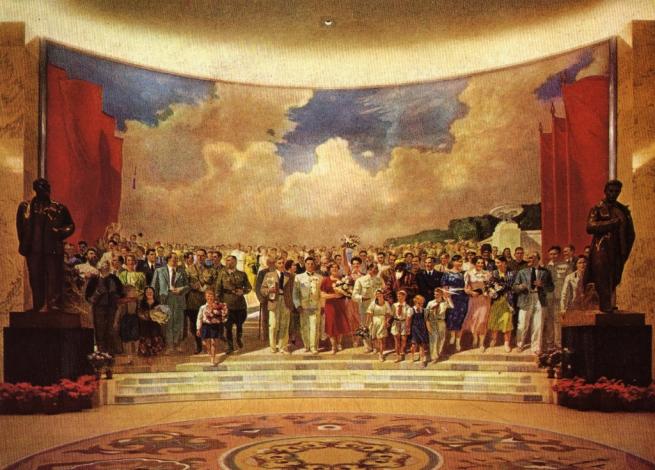
Vasilii Efanov, Famous People of the Land of Soviets, 1939
The topics Piretto deals with in these two books give us a clear picture of Piretto’s research aims and questions. These include, popular Soviet icons, the history of a famous Soviet World War II poster up to and including the collapse of the Soviet Union, Stalin’s propaganda photographs, the culture of the body in Communist Russia and an inquiry into the coupling of Mother Volga and Father Stalin.
Piretto’s investigations are detective-like, in that they examine the minutiae of everyday life under the heel of the ‘Little Father of the People’ in order to build up an overall picture of the mechanisms that drove the Soviet regime. The detailed cameos Piretto paints are pieces of a bigger mosaic that reconstructs the mentality and habits of the Soviet people. His examination of everyday objects build up a history of Soviet customs and, more interestingly, of the consensus-building mechanisms the regime adopted that were not only based on the terror of being sent to a Gulag. Piretto challenges many commonplaces and poses new questions about the present.
The ‘Private Life of Soviet Objects’ is really unique because it reconstructs Russian and Soviet daily life by examining the contents of their shopping baskets, an automatic distributor of fizzy water, a mug with faces painted on it, Easter cakes, and many other “objects”. Of course the objects of his analysis are not all in Piretto’s house in Milan where he teaches at the State University, but a good many of them have been collected with dedication and patience.
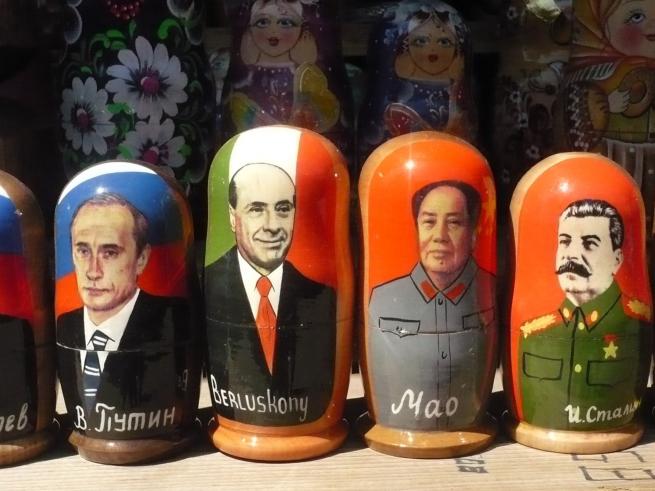
The aim of my interview was to clarify a few points Piretto had made at the Mantova Festival of Literature and to try and build a clearer picture of today’s Russia. I also wanted to understand more about its enigmatic leader -Vladimir Putin, who turned 62 just recently - as well as attempt a few comparisons with Putin’s predecessors.
What is going on today in Russia?
After starting his leadership by tackling the economy, Putin is now engaging with culture and religion. He has donned the role of moralizer and motivator, and he is heavily investing in culture. The western perception of what is going on in Russia is more tragic than the Russian view. Pussy riot members all over the world are considered heroic victims of Putin’s repression, while in Russia they are largely ignored by the majority of the population, and those who do know them despise them. They are supported by a very small minority, which no longer even coincides with what were once known as intellectuals. Putin calls them pro-western “creatives”. Many Russians still think they live in one of the most liberal, wealthy and happy countries in the world, because, compared to Soviet times, nowadays they feel rich. Shops are bursting with consumer goods. While it is true that in the recent past there have been sections of the population struggling to keep up – those who were humiliated, offended or cast aside by the regime change – but today adults and young people enjoy the fact that the supermarkets are well stocked, and that cafés and restaurants are teeming with clients. You can go to the cinema or to a concert hall and see any film or performer you want; Internet has not been shut down yet. All this was not true in Soviet times.
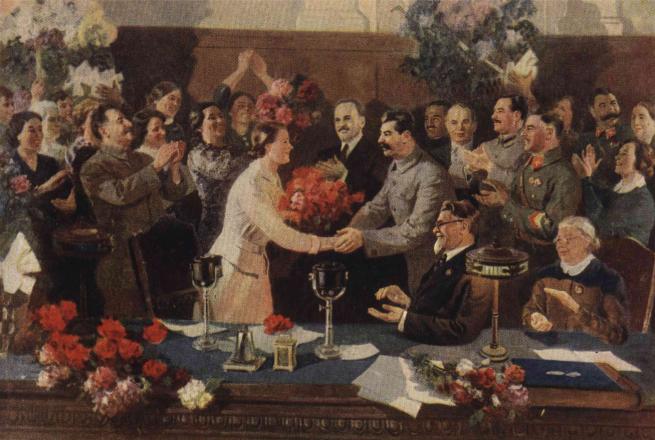
Vasilii Efanov, An Unforgettable Meeting, 1936-37
Two rock stars who now oppose Putin, for example, Andrej Makarevič e Boris Grebenščikov, leaders of two of the most successful bands in the Soviet 1980s, publically asserted that they were living in a free, democratic state only three years ago. Today they are protesting, but the vast majority of the country is still convinced that their liberties are intact. If Putin demagogically condemns obscenity or profanity in theatrical productions or in literature, as he did recently, this majority loves him all the more. After all, when Berlusconi was in power in Italy horrified foreign friends asked me how Italian put up with his antics. When you live outside a country perceptions are every different from those within the country.
Who is Vladimir Putin in your view?
He is a product of the Soviet Union, an example of those characters in the Soviet regime who managed to recycle themselves and get rich in the early 1990s. On the business side there were the ”New Russians”, and the” New Rich”. Exploiting Mafia connections and various rackets – including the Italian Mafia, by the way – they got rich quick and showed off their success by living in extreme luxury and ostentatious material wealth. In the second half of the 1990s, after the first five years of feeding frenzy, when people began to feel as though all their certainties had been taken away, these shady figures came forward. Exploiting to the full their Soviet past, they had sufficient intelligence and business acumen to realize that certain industries and companies that had been abandoned could easily be recuperated and transformed into highly productive operations. This was one of the reasons why they were despised by the old intelligentsia, who were drowning in self-pity but secretly covetous of the others’ success. Their behavior followed the classic Russian psychological pattern of cognitive dissonance: as in the fable of the fox and the grapes.
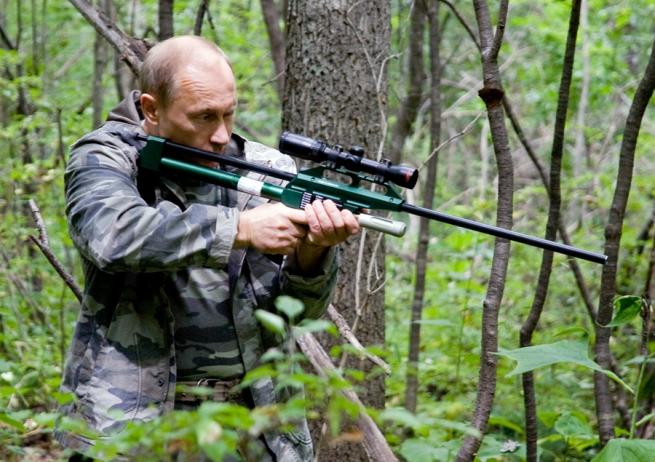
They despised them because they had not achieved the same results, and feigned total disinterest or scorn. They said: “This is what the collapse of the Soviet Union has brought us to!” What they did not grasp is that the “New Russians” had been clever enough to exploit the wreckage of the Soviet Regime to their own ends. However debatable their means had been, the end was successful. I’m saying this as a researcher of cultural phenomena not as a politologist. Rather than crying over the ruins of the regime, the “New Rich” created something new. Whether it was right or wrong, this is what happened. They took action. Taking action was a rare trait in the history of the country’s mentality, and was always condemned as execrable. Putin followed a similar path, but in the political realm. He used his Soviet training, and the tools he learned in the Kgb. He exploited his in-depth knowledge of the raw nerves of the country and its people, just as his predecessors Lenin and Stalin had. In this aspect he was unlike Khrushchev or Gorbachev, who played with and deliberately provoked the basic instincts of the Russian people.
People talk about the political body of the leader. How does this work?
It is a highly sophisticated construct. He understood the situation the country was in. While the intelligentsia was self-commiserating, he built up his empire piece by piece, investing in his first mandate in the economy and on potential alliances in Europe, trade etc. Now that growth is not as fast as it was at the beginning, he has decided to work on the culture and “spirit” of the country.
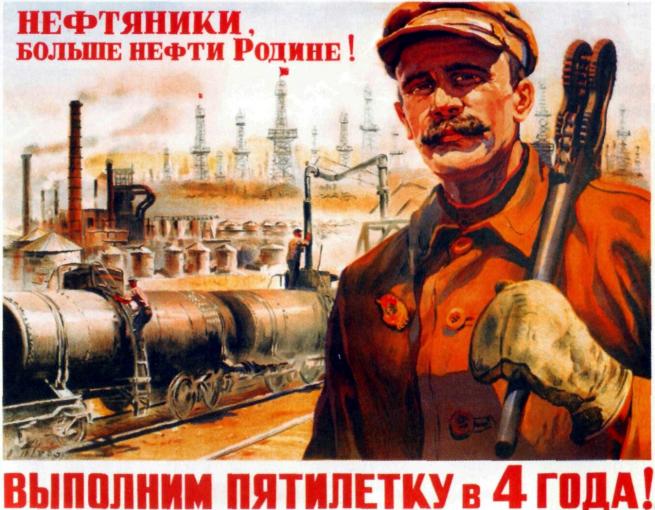
Pyotr Krivonogov, Oil INdustry Workers, More Oil for the Motherland! Perform Five-Year Plan in Four Year!, 1948
What is he doing exactly for culture?
Recently he gave the Culture Minister, Vladimir Medinsky , the mandate to reconstruct and redefine the relationship between Russia and the rest of the world. In order to understand the scope of this task we need to go back to the nineteenth century. In Russia at that time there were those who supported Slavic culture and those who leaned towards the West in their tastes. The former thought of Russia as being part of “Asian immobilism” and they fiercely defended traditions, the habit of tyranny and the acceptance of power – whether it be in the hands of a Pope, a Tsar, or Stalin himself - as “affectionate submission to a dear, sweet old Father” whose role was to manage power for them. The pro-Westerners condemned this attitude and promoted a rational approach to building a civic and national identity based on the rule of law. This group was accused by the other of being “mercantilist” – today we would say ‘capitalist’. Well, more or less the same situation is being reproduced today.
The same?
Not exactly the same, but ostensibly the same categories. The Russians’ problem has always been how to relate to the West. Throughout history they have always harbored an inferiority complex; they always felt they were trailing behind the rest of the world. Going back in time, think of Peter the Great. At the end of the seventeenth century he said Russia needed modernizing. He was not that greatly traveled. The only country he had been to was Holland, and that became his model. He made noblemen shave their beards off in adherence to a less archaic model, and he imposed education on the aristocratic young in order to Europeanize them. This was one of the first campaigns in Russian history. Change in Russia has always come about through sudden leaps forward or unexpected around turns. It has systematically been subject to authoritative and authoritarian leaders claiming that had already been done was wrong. Peter the Great felt his subjects were backward, so he decided to Europeanize them.
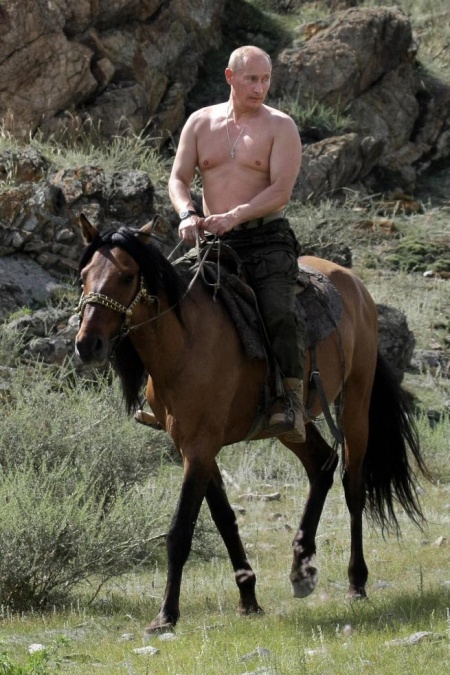
Protests usually follow, there is strong opposition, then the Father’s guiding hand – and it must be remembered that the Tsar’s power was God-given – wins the day and imposes change on his people. In 1861 the serfs of the glebe were freed. A feudal system that had lasted until the second half of the nineteenth century vanished overnight. Nobody tells it better than Chekhov. The land-owning class, the Bourgeoisie, was crippled because the middle classes were unable to cope with the new situation. They were unused to work and to managing their farms properly. The spirit of immobilism and apathy that dominates the 1859 novel Oblomov by Ivan Goncharov portrays their predicament perfectly. The system had to adjust once again. Russia is no longer a feudal country, there are no longer serfs of the glebe. But it was only true in the letter of the law. The serfs themselves had not understood. Before they were not aware of their condition of slavery, and when they were told they were no longer slaves they had no idea what it meant. In Chekhov’s ‘Cherry Orchard’, the serf Firs says that at the “time of the disaster”, that is the abolishment of servitude, he stayed with his masters. That was the order of things, and somebody had tried to subvert this order.
What role did the October Revolution play?
It was yet another upturn. Another blitz, another campaign. And anyway, during the 70 years of Soviet power it was not all sweetness and light. Stalin upturned the Bolshevik principles, Khrushchev denounced Stalin, and a few decades later Gorbachev undermined Communism in general.
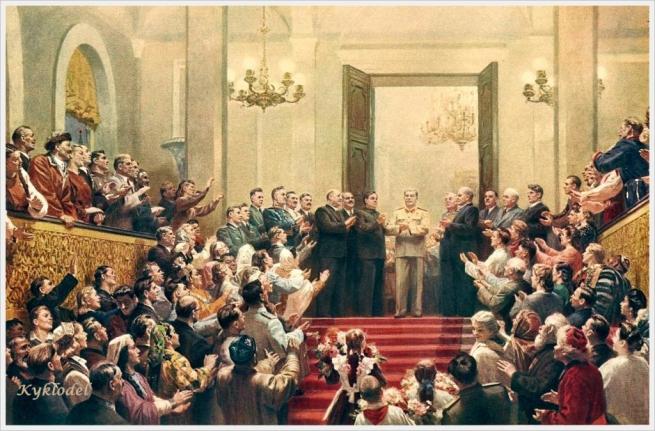
Yurij Kugach, Glory to the Great Stalin, 1950
What was Stalin’s mode of action?
What Stalin did was to bring back some of the economic and cultural principles that first the Revolution and then Bolshevism had abolished. He re-created privileges, selected an élite, re-introduced luxury, re-constructed a hierarchy. Read Bakhtin’s study on the grotesque body during carnival. His book on Rabelais could not be published until Khrushchev came to power. Bakhtin himself started out as an enthusiastic revolutionary because the principles he recognized in Gargantua and Pantagruel would go on to subvert the bourgeois ideals of rules, privileges and hierarchies.
Stalin put all these ideals back on the table, and profoundly disappointed the critic. He created new categories in order to create differences among his subjects and award prizes, privileges and advantages accordingly. These categories - Stakhanovism, highly productive worker, model-worker, etc. – had the tragic capacity to transform themselves, without any particular motivation, into accusations of abuse of power, and led to purges or even physical elimination. The rhetoric worked on the basis of a reciprocal but undeclared deception, which was redeemed in the name of an ideal and in that of the investment itself.
All you had to do was declare yourself a model worker and you got your privileges, reserved shops, even private cars. The propaganda worked on the basis of this fiction and propagated the message amongst other workers. Today we talk about “Stalin’s neo-capitalism” and that is exactly what it was, but only for the élite. The élite lived in larger apartments, had fine clothes, women had perfume, make up and access to good food, and were no longer obliged to imitate men as they had been forced to in the 1920s. For those excluded from these privileges a virtual process of identification, with emotional and ideological involvement, ensured the message was received.
How did all this square with Stalin’s purges and Gulags?
They were yet another way of showing off how effective the regime was. The purges ere not clandestine. The question of who to remove was decided in an office, and then rhetorically transformed into a politically positive message. The next day the newspapers communicated that 100 or 200 enemies of the people had been eliminated.
For us non-Russians it is hard to understand the Russians’ acceptance, especially when the purges eliminated friends or relatives. It was seen as a small “kingdom of evil” in a splendid universe. Stalinism was like a giant theme park where ugliness had been eliminated. As Milan Kundera wrote in his ‘Unbearable Lightness of Being’, totalitarian kitsch is when you “remove all the shit” from life. In Stalin’s USSR the shit was that little “kingdom of evil” where the enemies of the people were isolated and eliminated.
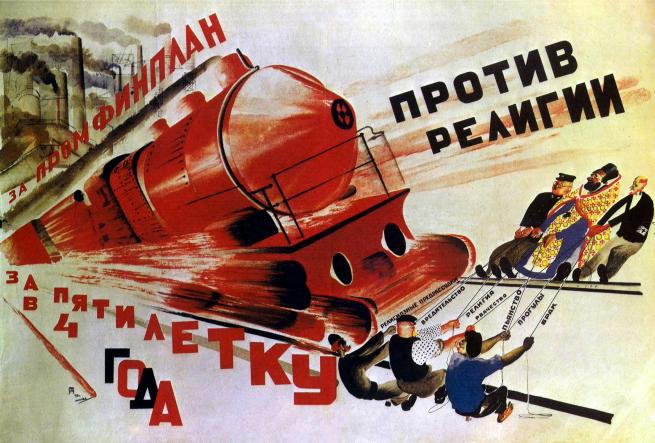
Yurij Pimenov, Against Religion For Industrial and Financial Plan Complete Five Year Plan in Four Years, 1930
What if the so-called enemy was your father, mother, husband, wife, son, daughter, or colleague? How could there be no doubt?
The construction of this cultural and visual discourse was highly convincing. In this regard I often cite the Muse of the Leningrad siege, the poet Olga Bergholz, who raised the morale of the city’s inhabitants over the sound waves of Radio Leningrad. In a secret diary – so secret even her husband knew nothing about it, and which she kept buried in the courtyard of the house where she lived – she wrote that when she had been imprisoned as an ‘enemy of the people’ and saw how highly Stalin’s name was considered, she did not dare tell them that she herself had got to the point that she had begun to doubt that Stalin “knew everything”. A highly sophisticated intellectual, in the innermost soul knew that Stalin may have been responsible for the tragic situation in her country, but out of respect, not out of fear, she never mentioned the fact to her fellow citizens.
How did this mass seduction of a whole nation take place? Through images?
Film, art, music, architecture… and remember that people shared houses, lived crowded into shacks, wooden huts built to last a few months near construction sites then transformed into homes. Everyday life was hard, but then you went to the cinema and watched Stalin’s musicals, set in superb apartments, with gripping emotional stories…the representation of their “radiant future” was never-ending.
G. Aleksandrov, The Cirque, 1936. Russian, no Subtitles.
I. Pyr’ev, The Swine Girl and the Sheperd, 1941. Russian, English Subtitle
There was only one time dimension that was not permitted. As Zhdanov, Stalin’s cultural arm, once claimed in so many words: “the present is too grey to be depicted as it is”. Art, literature and music, he said, should represent the future as it will be when the investments and achievements of the ideology are realized.
The power of imagination, like Hollywood films, where an image of the world was presented to which everyone, immigrants from Europe and Afro-Americans alike, could aspire.
That’s right. Or like the films that featured white telephones during Italian fascism. The power of imagination is incredibly strong. Everything was so well constructed, incredible care was taken, sophistication even. In Russia under Stalin a lot was invested in building empathy, in constructing emotional involvement.
Where does this empathy come from?
From the idolatry of a figurehead, what Khrushchev would have stigmatized as a cult of the personality. The figure of Stalin as a deity or demigod was knowingly constructed. Everything was invested in this simulacrum. Unlike Hitler or Mussolini, Stalin never joined the crowds, he did not allow himself to be touched, he mostly kept himself out of sight. He took great pleasure in watching others parade across the Red Square in those incredibly harmonious geometric patterns, those esthetically perfect lines of bodies that represented the political body of the country.
An exemple of gymnastic parade in 1939 experimentally filmed colour
Likenesses of him were nearly always in the form of statues, monuments or giant blown-up portraits. His presence was guaranteed by means of his image – whether it was a statue, photograph or portrait . But this presence had a double meaning: I am here with the crowd sharing in their emotion, but at the same time I am keeping an eye on you.
There are many paintings in the Socialist Realism school that depict popular festivals where Stalin’s portrait features in a dominant position. It is like a warning. Do what you know you’re supposed to do and I’ll make sure you do. Comrade Stalin is here with you, and you take pleasure and satisfaction in what you are doing because you share it with him It is not yours to own personally. After the war, a poster was published depicting a Stalin shaking hands with a worker. The slogan reads: “Work so that Comrade Stalin will thank you”. You worked to make him happy. That was the message.
At the same time, there were organized receptions at the Kremlin for the élite who were lucky enough to be meted out an invitation as a reward for some merit in his elaborate system. The pictorial genre that flourished as a result went along the lines of “Hey, You’ve met Stalin!”. People who had met him were depicted as having an aura as a result of the vision. It reminds me of Roland Barthes in his 1980 book ‘Camera Lucida’ who exclaimed, on seeing a photograph of Napoleon’s brother, “These are the eyes that saw the emperor.” It also makes me think of the novel by Edmondo De Amicis, Cuore, which all Italians read in school, when the father who had shook hands with the King grabs his son’s hands and says, “This is the caress of a King”. It did not happen only in the Soviet Union.

Pope John XXIII used to say:“Stroke a child’s cheek and say it’s the stroke of a Pope.” At the Mantova Literature Festival you said something very interesting. You said Stalin went against the Russian spirit. Can you explain this? I have a feeling it has something to do with Putin’s politics today.
Stalin went against the Bolshevik principles. However, Lenin had already questioned some of these principles – especially the principles of sobriety and the repudiation of possession - during the New Economic Policy (NEP) drive of the 1920s. He was sorely criticized, but Lenin’s primary goal was economic progress and in order to achieve this, he put Communist dogmas on the back burner. When Lenin died, NEP died with him. Stalin inherited Lenin’s new model of a bourgeoisie, and institutionalized it. Under Stalin it was no longer illegal to have a nice, comfortable, well-furnished house; it was no longer illegal to have ugly knickknacks on your sideboards. The Samovar, which was abhorred as a symbol of the middle classes (or Gypsy novels) came back into fashion. Bonuses and incentives were invented for the most productive workers in the country. All of these trends went against the grain of Bolshevist purity, and was incompatible with the simple sobriety of the constructivists who aspired to a utopia of equality.
What was Stalin’s attitude to the traditional Russian spirit?
I use the term “Russian spirit” precisely because I do not agree with the idea of a “Russian soul” that was popularized in nineteenth century Russian literature. I think of it more as a “spirit” or a “mood”, or maybe a “mentality”. This mentality was atavistically linked to sacrifice, suffering, sadness, or melancholy. Take Russian popular songs. In the old days, singing was just about the only thing serfs were allowed to do, and they did not sing songs of protest. They were an expression of suffering by means of a melody. The Tsar or the landlord was never the object of curses or hatred; on the contrary, the songs praised the serfs’ privileged but painful relationship with nature. The Song of the Volga Boatmen is an eloquent case in point.
The fact that in Russia there are two terms to indicate the concept of ‘freedom’ is significant. One is volya, freedom of the spirit even when the body is imprisoned or enslaved; the other is svoboda, or political freedom. It is said that in old Russia, the serfs felt free despite their serfdom. In Tarkovsky’s Andrei Rublev, their suffering, sacrifice, acceptance of their exploitation, affectionate subordination to power was well illustrated. All these qualities were embedded in what was considered the Russian spirit. The Russian Revolution turned everything on its head, by inviting revolt and protest. Stalin went as far as proclaiming State-sponsored optimism, a joie de vivre that was imposed on citizens from above. Stalin deprived the Russian populace of their traditional sentiment of sacrifice and suffering. Traditional songs were banned. Steppe and more Steppe sung by Lidia Ruslanova is a perfect example of the Russian spirit that was no longer tolerated, with its anguished representation of pain and melancholy, tinkling sleigh bells, snow storms smothering any sign of life, and desperate exchanges between passengers and sleigh drivers. Popular songs for the masses took their place. Uplifting and assertive marches were considered better suited to the new situation.
Great is my Native Land, Soundtrack from the film The Cirque, 1938
How did the relationship with nature transform itself?
The category of the sublime , which triggered a combination of awe and dread in the Russian, was eliminated. Nature in Stalin’s vision was to be subjugated by mankind. There was a popular song in 1937, one of the many dedicated to Stalin from the 1930s, that described him as being a “simple Soviet man” who had been able to “shift mountains and reverse the course of rivers” (‘A Simple Soviet Man’). Stalin convinced Russians that the same natural world that helped them feel free even though they were serfs was there to be used for their own purposes. All the artificial canals and hydroelectric stations along the Volga River are ample proof of this change in attitude. The subliminal message was: do not be bewitched by the incredible power of Mother Nature because we Russians are even more powerful than she is. Mother Nature exists to serve our needs.
In your essays you talk about “Russian melancholy”, which you say you consider an essential component of the Russian spirit or mentality. What are Russians melancholic about?
Russian melancholy is the result of people’s relationship with space, with the landscape, with the immensity of the Russian landmass. There are a series of terms which are impossible to translate from Russian. For example, “landscape” in Russian is a calque from the French paysage or a calque from the German landschaft. The Slav word, the original word to express the immensity of the landscape is prostor. If we want to translate this word we need to add a huge amount of information, with a phrase such as “an infinite territory” or “a land with no horizon”, or “infinite flat land” etc. In Gogol’s ‘Dead Souls’, as Chichikov travels through Russia on his three-horse sled, he addresses the land directly: “You are so flat, you are so uniform, what is so attractive about you”. The answer would appear to be the hidden energy of the Steppe, which only those who have been born and bred in the country and have experienced a physical relationship with the land can appreciate.
Russia was land long before it was a nation. Pilgrims, vagabonds and escapees from Siberia have all traversed infinite these infinite territories, and felt its secret energy. If you are not Russian, Gogol wrote, you cannot grasp the country’s “grandiosity and beauty”. And yet, this same immensity triggers agoraphobia, dread and awe. Russians perceive this in their own particular way. The Russian terms are toska and chandra, which mean a mixture of melancholy, nostalgia, and anxiety, and which drove Russian people to shut themselves up in their crowded izba log houses.
Even though they had immense space available to them, Russian villages were all crammed together. The izba dwellings were jam-packed, one on top of the other, and inside these log huts families lived in terrible proximity despite the fact that they had infinite forests to cut down and build more. People lived in such crowded conditions that at one point in their lives they felt they needed to get out and take a leap into the unknown. This desire is known as bistraya ezhda, which means literally ‘a galloping horse ride into space’, or ‘taking a leap into the unknown on a three-horse troika’. Again, what is depicted is that longing to find the edge, the horizon, or border that not exist. It is a constant swing between agoraphobia and claustrophobia.

In Primo Levi’s ‘The Truce’ (Bodley Head 1965), he talks about the continuous mood swings of the Russians he meets, from enthusiasm to depression.
These mood swings from euphoria to devastating anguish are very common. Popular songs, to go back to what we were saying before, were the only way for people to express their anguish. There are songs that describe traversing this immense landscape. People knew where they started, but not where they would end up. What counted was the journey. In fact, these songs describe storms, wind, carriage attendants, injustices received. There is no attempt to rectify this injustice. At most the song says something like: “I curse my destiny”. An escapee from Siberia crossing Lake Baikal, gets home to his mother and asks, “What happened to my father and my brother?” She answers, “Your father has been buried in the damp ground for a long time, your brother is rattling his chains in distant Siberia”. And what does the vagabond-escapee do then? He sets off on his travels again, across the wild steppes of the Transbaikal, his knapsack on his shoulder, cursing his destiny. He doesn’t seek solutions, he does nothing to change his destiny. The rhythm of the song (‘Through the Wild Steppes of the Transbaikal’) is hobbling or shuffling (protyazhnye), imitating the escapee’s hard march across the steppes.
In Europe we usually think of melancholy as a sentiment linked to time rather than space. How do time and space cohabit in the Russian spirit?
In order to explain this we need to go back to the hobbling rhythm of the song. Shuffling along, slowly. Time dilates with the immensity of the space, and slowness is an essential feature . When monks wandered through the Russian territories looking for the most appropriate, most spectacular place – not esthetically but spiritually speaking – to settle and build their monastery, they would travel for years. Once they had identified a place, it meant they had come to an end of their quest for ideal beauty. They achieved their aim, and build their monastery, but it meant no more wandering, no more slow meanderings through the landscape. Building the monastery also meant adhering to rules, regulations, limitations, timetables, whereas for these monks the greatest harmony lay in infinity. The infinity of the Russian landscape.
But what about when the Bolsheviks took over, and during the Revolution? Was there suddenly a new form of rebellion that had never before expressed itself in the Russian spirit?
The Bolsheviks tried to reign in the Russian spirit even more than the landlords had done before them.
So how was the Revolution possible?
The Revolution tried to assuage the thirst for freedom that was present in the complaints but had never been quenched. However, it took years, decades to persuade the Russians that the Revolution was a good thing. That is, if they ever did persuade the people. There was more enthusiasm for the Revolution in the ranks of the intellectuals, artists and, most of all, the Futurists. Ordinary people found it hard to understand. It was an élite that led the Revolution, as was the dream of a “popular culture”. The idea that not only should culture be introduced into the lives of the proletariat, but the proletariat should produce its own culture. How was it supposed to do that? The vast majority of the Russian people were illiterate. The result was a drive for literacy, and many other incredibly important strategies such as setting up schools for workers. And let us not forget the agitprop trains that travelled to the furthest outposts of the country to bring the revolutionary message, which nobody in these remote country districts had ever heard of.
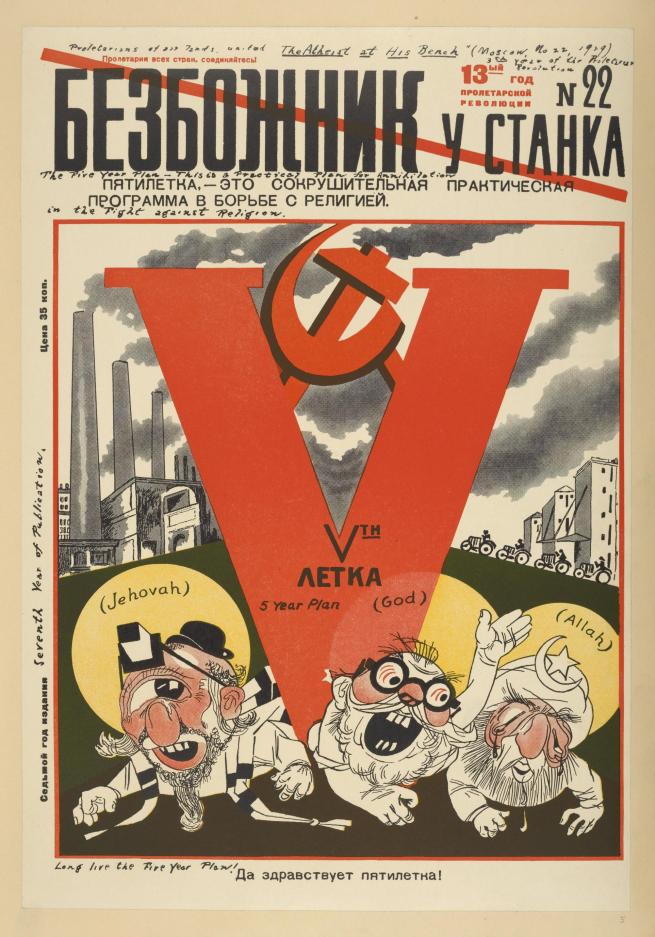
How do Lenin’s Five Year Plan and New Economic Policy drive fit into this picture of the Russian spirit?
To combat the neo-conservatism of the NEP, time was also hyper regulated. Once the NEP was liquidated, the first Five Year Plan took over. The revolutionaries however felt that they could improve on it. The slogan was “Five years in four”. Time was accelerated and compressed. The Five Year Plan stated it would take five years to accomplish x. The Revolutionaries stated they could improve both the result and the period indicated.
This is a sharp contrast to Oblomov’s idleness which we have indicated as part of the Russian mentality, his famous len, or inactivity marked by the boiling water in the samovar. Again, in Chekhov’s ‘Uncle Vanya’, the nurse says something like this: “Since the professor and his wife arrived, the samovar has been boiling constantly but nobody has been drinking tea…there are no fixed times anymore.” The intellectual blunderbuss from the city arrives and everything goes to pot. Old Russia loved idleness, the annulment of space and time, except on those occasions when they felt the need to fight this inactivity and seek “revenge” in a wild sled ride or a high speed chase in a troika.
Is this where the Bolsheviks came from?
They changed the calendar and made it the same as the western one. They changed the holidays, keeping the same days but giving them different names. In the first Five Year Plan, in 1928, that compression of time we were talking about takes place. Baby girls were given names such as ‘Five year plan in four years’. Gorbachev did something similar: he abolished tea drinking at work and shopping expeditions during office hours. Work was work.
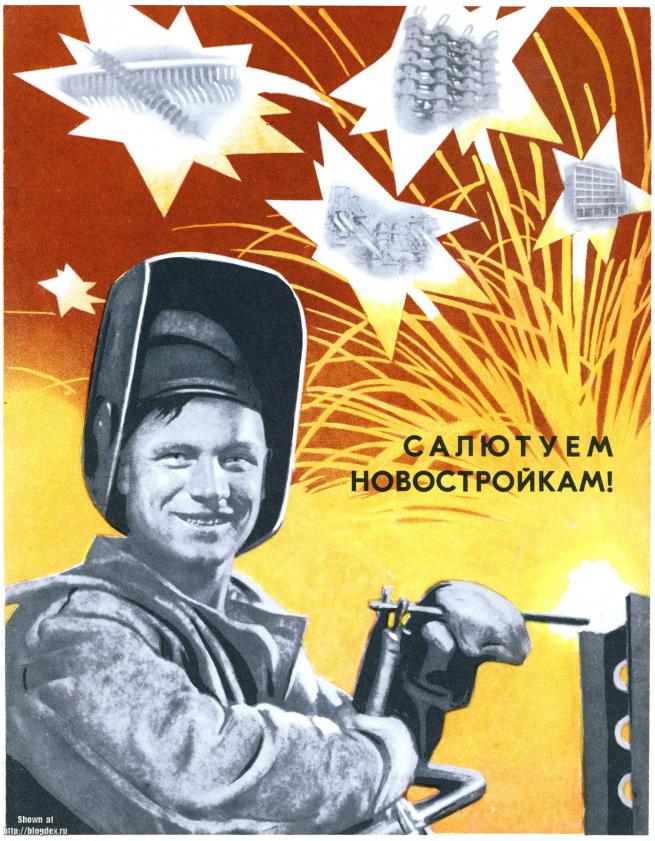
And did it do the trick?
Absolutely not. People hated Gorbachev for it. He imposed Western time. Here the question of Russia’s Euro-Asian nature. I haven’t studied this issue deeply, so I’m just mentioning it as I’m not a specialist. The Asian side of Russia that has always been seen as holding it back in a negative sense is actually an essential component of Russian mentality. As soon as you leave the big cities, time goes back to running very slowly. When I cruised the Volga for three days and nights, I felt the sluggishness of the river, the slowness of the boat. I felt the inactivity in my body.
This inactivity is the opposite of needing to take action, needing to produce. The sky, the lights, the landscape captures you. And I’m foreign, so you can imagine… Russians who emigrate find it hard to live without it, without the melancholy, without those views. Still today, outside St Petersburg, outside Moscow, despite everything that has happened, the collapse of the Soviet Union, Gorbachev, Yeltsin, Putin, I’m almost certain that you can still feel the inertia and this incredible relationship with the earth, with the water, with all the elements that surround you.
Let’s go back to Putin. How has he behaved with regard to the revolutionary past, Stalin, the collapse of the USSR? Has he brought back the Russian spirit?
He understood that the nostalgia Russians felt for the Soviet Union as it was in the 1990s was for a world power that no longer exists. He also recognized that people still felt the country represented them despite their oppression and their difficulties. These problems had previously been solved, at least in part, by the illegal economy, until Gorbachev dealt it a mortal blow when he came to power. Putin appreciated that after its orgy of consumerism, when the élite feasted on western products bought from luxury shops, the time would come when he needed to think about the rest of the population and play his hand with those who were neither oligarchs, nor “new Russians” nor the nuoveaux riches. What the rest of the country wanted was an ideal to believe in, a strong State, and – as always in Russian history - a charismatic leader to whom to delegate the task of representing the population.
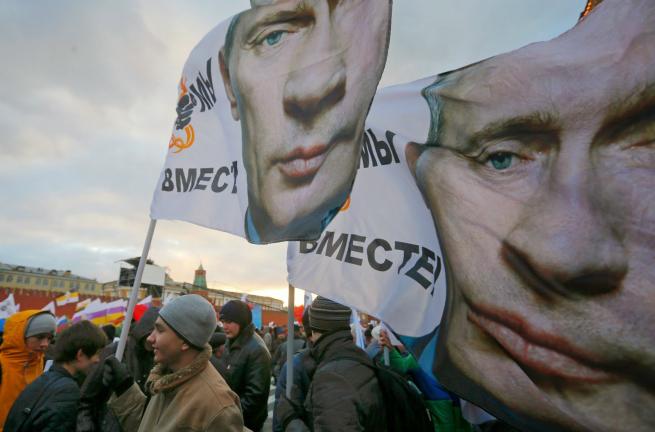
And yet there are signs of dissent against Putin, there is criticism even from inside Russia…
The other week there were 25,000 people marching against Putin, all “creatives” and intellectuals, as Putin would put it. In a city of 12 million inhabitants, that is really very few. It is still significant that they held a rally, that there is still someone willing to risk it. Like back in the days of Soviet dissidence. Most dissidents then, except perhaps Sakharov, Solzhenitsyn and few others, those who did not agree with the regime did not believe they could change the world and defeat the Soviet Union. Todays’ opposition, in my view, protest in the same spirit – like those seven poor wretches who walked out into the Red Square on August 25, 1968 to protest against the invasion of Czechoslovakia. They knew full well they would be arrested and imprisoned and that the Soviet tanks would roll into Prague, but as they wrote in the memoires they had no real choice in their minds. They said they could not have looked at themselves in the mirror if they had not protested against the regime. They ended up in labor camps and psychiatric hospitals. Demonstrators today risk much less, but their attitude is the same.
What is Putin’s consensus based on?
He is progressively re-instating all the categories that had been reviled, mocked and condemned as Soviet.
Can you give me some examples of these categories?
The use of force, for example. Remember the Moscow theater hostage crisis after Chechen terrorist attack on the Dubrovka theater? Putin did not hesitate to fill the theater with a toxic gas, sacrificing the lives of Russian hostages, in order to eliminate the women terrorists from Chechnya. The general population loved Putin for this decisiveness, recognizing in him the strong man they had always longed for. The school in Beslan showed similar strength, and his current anti-European stance is also courageous. “Europeans may threaten us, they may try and impose their culture on us, but we gain our strength from our roots.” This is Putin’s message, loud and clear.

Another factor is the strong bond with the Russian Orthodox church, another interesting point. The so-called ‘moralization drive’ in the second Putin government sees Putin declaring himself a practicing believer. The population had only recently re-discovered its faith - or religious superstition, if you will – after 70 years of State enforced atheism, and Putin comes out with a campaign to reform morality. The women in Pussy Riot are considered immoral, Femen even more so. And don’t forget Putin’s homophobia. His attitude to homosexuals liberates the atavistic machoism of Russian men, on one hand, while playing to a deep-seated desire for law and order and social coherence, on the other.
What is the visual manifestation of all this?
First, the actions and reactions to artistic performances and protests held in recent years. The condemnation of Pussy Riot after their anomalous “prayer vigil” at the Temple of Christ the Savior.
La “preghiera” punk delle Pussy Riot perché la Vergine cacci Putin
Extremely interesting is also the Ceremony for the settlement of Putin into the Kremlin. It should be studied in detail, because of its deep significant. Or another example is also the rise up of demonstrations culminated with the 60th anniversary of the Victory Day 9 May 2005 on The Red Square.
Filmato dell’insediamento di Putin al Cremlino, 7/5/2012
Filmato della festa della vittoria, 9/5/2005
Putin balances his Soviet citations very carefully: his choice of music, the presence of war veterans with their medals, uniforms and flags. He is well aware of the phenomenon of nostalgia for the Soviet past, and seeks the right dose of symbolism for contemporary Russia. We Europeans are highly critical of this manipulation, but Putin is exactly what the Russians wanted. There is also the public flogging – metaphorically speaking – of artists who depict a negative image of Russia, a sort of return to censorship against artists who do not stick to the rules of praising and celebrating the country. For Putin, art and morality should return to respecting Christian and Slav traditions. On this front, Putin has gained a striking number of followers.
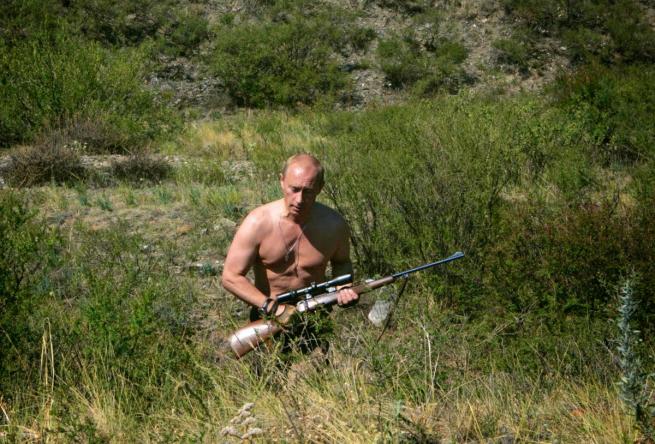
Unlike Stalin who looked down on the crowds in the Red Square from the podium, Putin strips off his clothes and shows his bare chest to the people.
Stalin did not need to show off his muscles because he made others - athletes and Stakhanovists - show off theirs. They were the perfect body of the USSR. Stalin was depicted in simulacra. His body was immobile, and only tiny gestures in his hands gave him life. Putin realized he had to exhibit his muscles, both physically and metaphorically. A true sportsman, hunter, horse rider, fisherman, woman’s man, with iron-muscles and ice-blue eyes. Having sex with women. That is another thing the true Russian man must do a lot of and do it well. The qualities that count are physicality, camaraderie and hedonism.
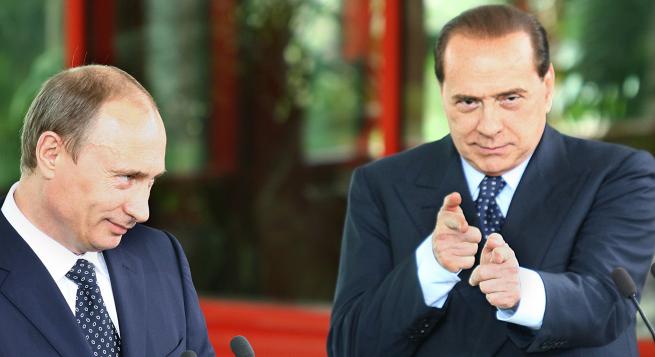
Putin’s closeness to Berlusconi is based on these ingredients. It’s surprising that Putin never talks about his consumption of vodka, but I may be able to explain. As a moralizer Putin could not exhibit his taste for drink, or his ability to withstand large amounts of alcohol, without adverse effects, but it is taken for granted in his media image. While Yeltsin was considered a drunken because he couldn’t hold his drink, Putin can hold it but, as far as I know, he had never explicitly called attention to it.
How is the cultural icon of Putin’s body used nowadays?
You can find fridge magnets, T-shirts, even toilet paper with Putin’s face on it. For good or for bad you can find everything nowadays. At a conference in Leipzig recently I mentioned something that took place very early on in Putin’s first mandate. In an art store in a tunnel of the Moscow metro, I caught site of a portrait of Putin. I asked in colloquial Russian, the kind you would use at the market, “How much are asking for Putin?” The shopkeeper was indignant and threw me out of her store without selling me the picture, scolding me with the words, “How dare you talk about our President like that!” Nowadays I think even Putin has become a gadget.
In Leipzig the debate revolved around the question as to whether a political body loses authority and authoritativeness when it is reproduced technically. Does it lose some of its aura? Or does it gain something? In the inaugural ceremony for Putin’s second presidency, Putin closed Moscow down so that when he crossed the deserted city in his limousine his car was the only thing moving. The ride through the ghost city was televised. The image was one man alone and the whole city at his service. Was this a message of absolute power or fear perhaps of peoples’ gazes? Was it a sign of strength or of weakness? I don’t have an answer.
The multiplication of gadgets depicting Putin’s body must surely devalue the brand? Don’t you think that Putin himself has become the object of a typical European feature: that is, a brand? There’s the Russian spirit we’ve been discussing, but this western feature may be useful to him too, don’t you think?
I own a statue of Queen Elizabeth run by solar battery. When it has been charged, it sets itself in motion and the Queen starts waving her hand. I think the Royal Family has invested in this image. The Royal Baby is a case in point, the new one conceived just as Scotland was about to vote for independence in a referendum.

In the contemporary world there is no longer such a thing as totality. There are niches, even big niches. This is how it works for consumers. Brands don’t speak to one public, they speak to all the general public. Outside Moscow, as you said, there is still a traditional mentality, à la Oblomov. But in the capital and in the big cities there are all the big brand names, all the chain stores, right?
The body politic has its own brand. I bought this in Moscow. It’s Stalin in the form of a lead soldier. I paid a great deal for it. On Facebook recently there was a Stalin doll. Like the Barbie Virgin Mary. Somebody posted that this was a Russian answer to the Barbie Madonna. The box is a kit comprising everything you need: boots, an armchair, a pipe. So Stalin is a toy now?

Perhaps they need to be interpreted as symptoms. They may not be reality; they are not necessary. They are images. All you need to do is take a picture and post it on Facebook. Isn’t there something to do with machismo in Putin?
Of course. Putin loves showing off his bare chest, and he loves exhibiting his women. Russian machismo comes from the contrast between patriarchy and matriarchy. Women have always managed the family and village life, but have never had institutional recognition for their vital role. Lenin, who was a careful and attentive leader, minted a slogan for a poster which read: “Every cook should know how to govern a State. We shall invest in women”. Stalin also published posters: “The women in the Kolkhozes are a great force!” During the years when men were away at war, women were forced to behave like men in order to keep their families alive and their country going. Stalin involved them in the creation of the collective farms, and then recognized a form of institutional role for them, but the figure of the man was still dominant in the system.
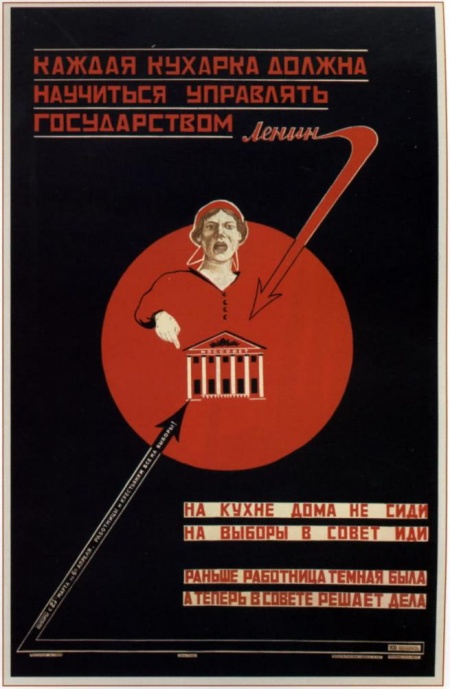
Every female cook should learn to govern the State, Lenin 1925
The political monk Rasputin, the poet Yesenin, the 1970s singer, Vysotsky – they were all dominant male figures. Rasputin “cured” St Petersburg ladies by having sex with them, giving birth to a legend about the massive dimensions of his penis. In the Moscow Museum of Eroticism there is a case allegedly holding Rasputin’s penis. In fact it is a sea cucumber, and people know it but they pretend to believe it is Rasputin’s penis. Putin has invested even in this heritage. As soon as the “gender”, or LGBGT discourse came to Russia, casting doubt on the conventional view of virility, Putin was ready with an image to publish of his saving a cameraman from a Siberian tiger, or bare-chested holding rifles or fishing rods. He takes his guests, Berlusconi included, hunting on the snow wearing Russian fur hats, to the sauna (banya), another male ritual where male bonding is paramount.
What are your predictions for the future?
I think Russia will go back to being a totalitarian regime. I think it risks taking significant steps back into the past, and that today there is an attitude of pseudo-religious and pseudo-moral restoration. This impression is based on our cultural categories and on observations from the outside, and from those involved – as far as restrictions and harassment is concerned.
For example, if you talk to Moscow’s gay community, they say they don’t really care about the homophobic laws. They carry on doing what they have always done, at least for now. Those who protest publically, including the artists and rock singers, are the ones who are aware of the risk. For the others the fear of Europe is being manipulated rhetorically and propagandistically. Russians still feel inferior, but they now feel they can keep up, and maybe even teach Europe something.
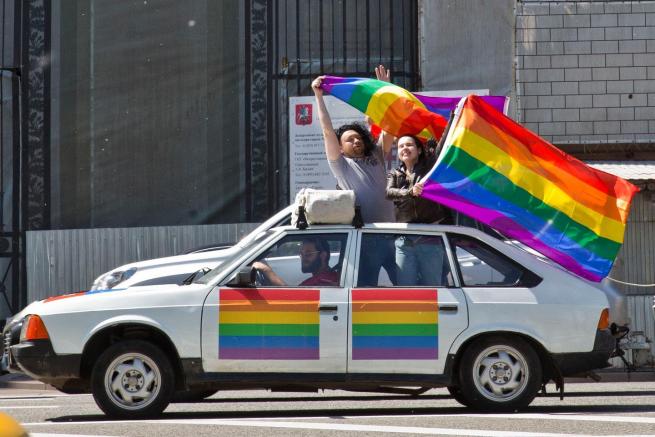
Gogol said it all in the 1840s. When in his poetic novel ‘Troika Russia’ he takes flight, the passenger asks: “Russia, where are you going?”. Russia does not answer. The only sound is the jingling of bells. The country is not able to provide an answer, but, Gogol continues, people bow to it, other peoples and other nations make way for it. It is a messianic vision. And this is what Putin is now investing his energies in. Russia can make it alone. It will try and show that, just as the Soviet Union inspired fear and awe the world over, today’s Russia could do the same. This messianic idea has never died down. Mocked and slapped down by the collapse of the USSR, the country can always rise again.
Was the collapse of the Soviet Union a huge disappointment to the Russians?
They were totally disoriented. They did not expect it. Even dissidents never dared hope for a dissolution of the Soviet Union. Perestroika disappointed many. Older people say Gorbachev laid waste to the country. Enthusiasm for freedom, democracy and consumerism followed, but it was too late after so many years of disorientation. A student from Belarus at one of my lectures recently told me about her parents who told her that after the collapse of the Soviet Union they had felt completely inadequate to the task at hand. Nobody had ever taught them to roll up their sleeves and get on with life on their own. For 70 years the Soviet regime had claimed that individuals only existed as part of a collectivity. It told its people: you are all the same, nobody should be any different. It re-proposed, with a few adjustments, the principle of the peasant communities of the Slav tradition. The Soviet concept of “collective” was actually a lexical translation of the old Russian peasant commune, obshchina. Different but together, building a political body, just as the Orthodox church had built up a spiritual body. Today Putin is trying to give back a form to all this.










 Since 2011
Since 2011 

